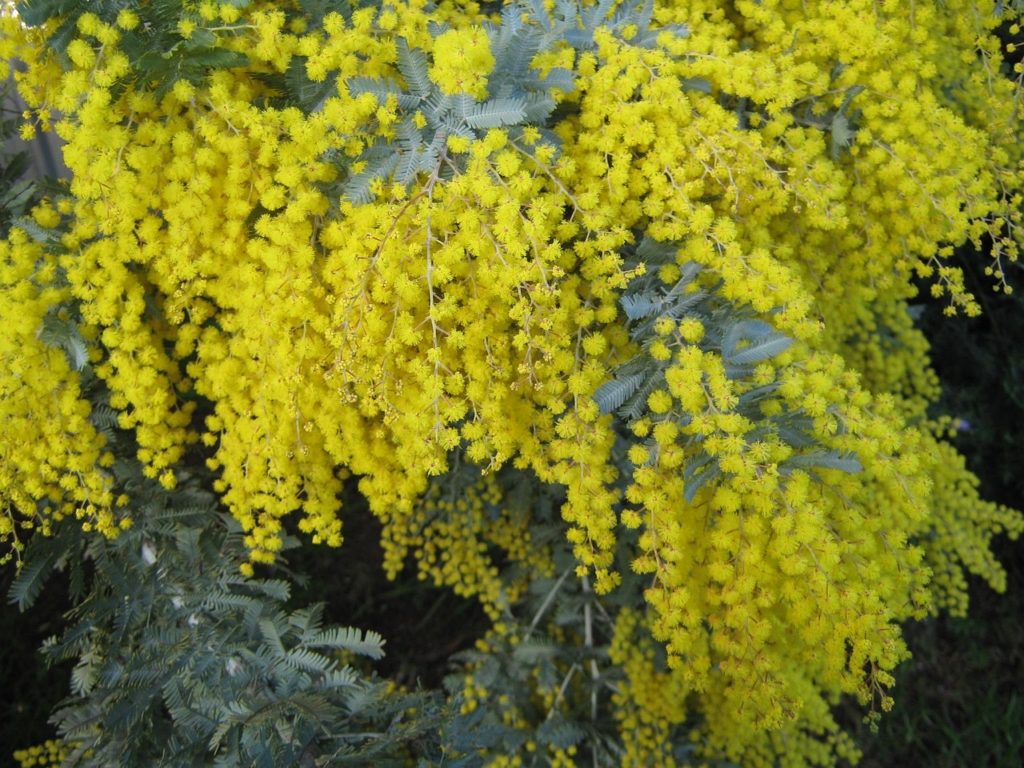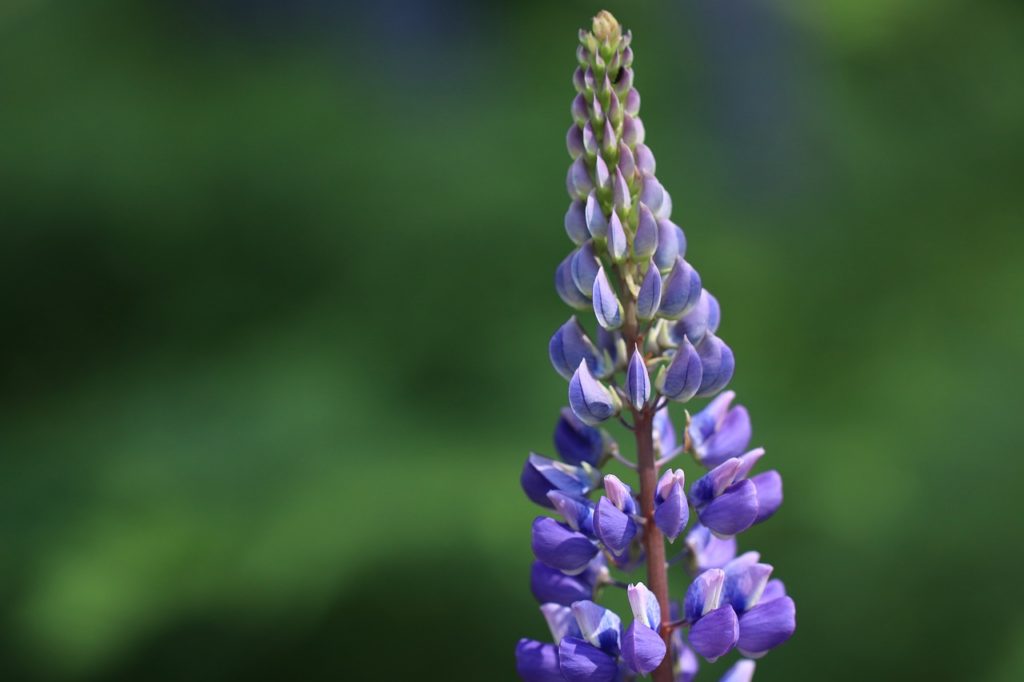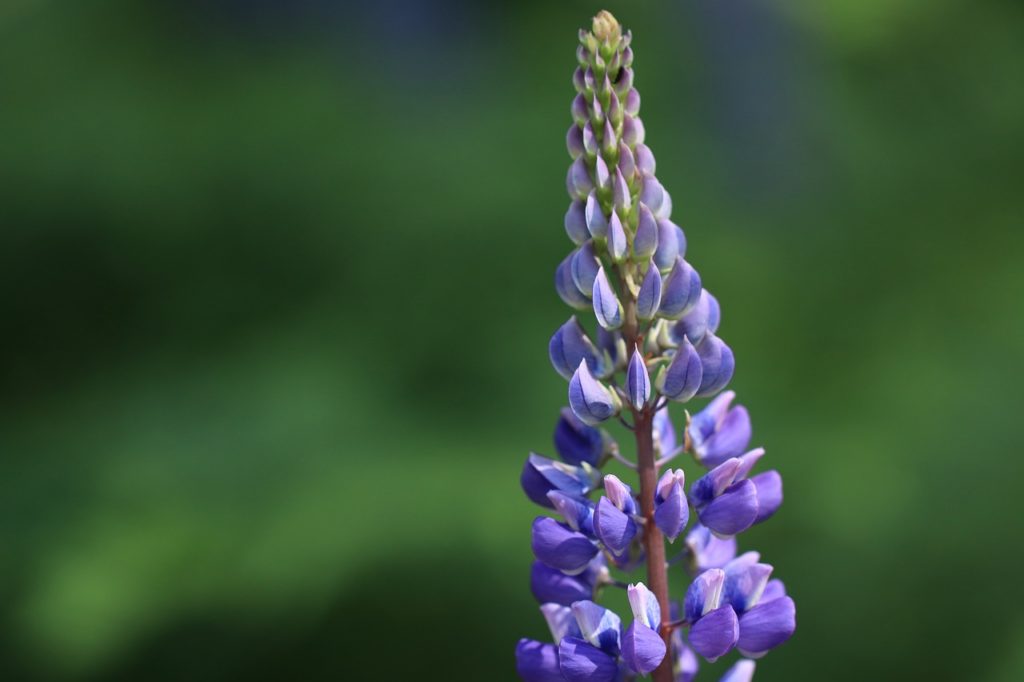In this comprehensive guide, I will explore the crucial role that native plants play in stormwater management and provide valuable insights for homeowners. With increasing urbanization and climate change, the management of stormwater has become a pressing issue for communities worldwide. Native plants offer an effective and sustainable solution to this challenge, as they have evolved to thrive in specific regions and possess unique characteristics that make them adept at absorbing and filtering stormwater runoff. By incorporating native plants into your landscaping, you can minimize the negative impacts of stormwater, reduce erosion, and improve the overall health of your local ecosystem. Whether you are a seasoned gardener or new to the world of landscaping, this guide will equip you with the knowledge and tools needed to harness the power of native plants in stormwater management.

Benefits of Native Plants in Stormwater Management
Stormwater management is a crucial aspect of urban and suburban planning, as it helps mitigate the adverse effects of excessive runoff during heavy rainfall. Native plants play a vital role in this process, offering numerous benefits that contribute to reducing runoff, erosion, and improving water quality. By incorporating native plants into stormwater management strategies, communities can create more sustainable and resilient landscapes.
Reduced runoff and erosion
Native plants have extensive root systems that are well-suited to absorb and retain water. Their deep and dense root networks act as natural sponges, capturing rainfall and reducing the amount of runoff that flows into storm drains and waterways. This decreased runoff helps to prevent erosion and the loss of valuable topsoil. Additionally, the root systems of native plants promote soil stability, reducing the potential for slope failures and landslides.
Improved water quality
One of the significant benefits of native plants in stormwater management is their ability to improve water quality. As rainfall percolates through the soil, the roots of native plants remove pollutants and excess nutrients that would otherwise be carried away by runoff. This process, known as biofiltration, helps to filter and cleanse the water, resulting in improved water quality for streams, rivers, lakes, and groundwater sources. By reducing the amount of pollutants entering water bodies, native plants help protect aquatic ecosystems and preserve the health of our natural resources.
Enhanced infiltration and groundwater recharge
Native plants are well-adapted to local soil conditions and are more effective at promoting infiltration and groundwater recharge compared to non-native species. Their deep root systems create pathways for water to penetrate the soil, allowing for increased absorption and filtration. This enhanced infiltration not only helps to recharge groundwater reserves but also replenishes aquifers and maintains the water table. By regenerating groundwater supplies, native plants contribute to the sustainable management of water resources and ensure the long-term availability of this vital resource.
Plant Selection for Stormwater Management
Choosing the right plants for stormwater management is essential to maximize their effectiveness in reducing runoff and improving water quality. Native species offer several advantages over non-native alternatives and should be prioritized when designing stormwater-friendly landscapes.
Choosing native species
Native plants are those that naturally occur in a specific region and have adapted to the local climate, soil conditions, and wildlife interactions. They have evolved over time to withstand the challenges presented by the local environment, making them more resilient and well-suited for stormwater management. When selecting native plants, it is essential to consider their growth characteristics, tolerance to flood or drought conditions, and their ability to filter and cleanse water effectively.
Consideration of plant characteristics
Plant characteristics such as root depth, growth habit, and foliage density should be taken into account when designing stormwater management systems. Native species with deep-rooted systems are especially advantageous, as they can effectively capture and store water. Plants with spreading growth habits and dense foliage provide additional benefits by reducing surface runoff and preventing soil erosion. By integrating a diverse range of native plants with varying characteristics, homeowners can create a more resilient and functional landscape that effectively manages stormwater.
Importance of plant placement
Strategic placement of native plants within the landscape is crucial for optimal stormwater management. When planning a stormwater-friendly landscape, it is essential to identify areas where runoff is likely to occur and select appropriate plants to capture and absorb the water. Placing native plants near downspouts, in low-lying areas, or along slopes can effectively intercept runoff and minimize erosion. Additionally, incorporating plants near impervious surfaces such as driveways or walkways can help reduce the amount of runoff that reaches storm drains. Careful consideration of plant placement ensures that the full potential of native plants in stormwater management is realized.

Designing a Stormwater-Friendly Landscape
To create an effective stormwater-friendly landscape, it is important to assess site conditions, implement rain gardens, construct green roofs, and install permeable pavement. These design elements work in harmony with native plants to maximize stormwater management benefits and promote sustainable landscapes.
Assessing site conditions
Before implementing stormwater management strategies, it is crucial to assess site conditions to determine the extent of the stormwater challenges. Factors such as soil composition, topography, existing drainage systems, and existing vegetation should be considered. By understanding the site’s specific characteristics, homeowners can tailor their stormwater management plan to address the unique needs and challenges of their property.
Creating rain gardens
Rain gardens are vegetated depressions designed to capture and absorb stormwater runoff. They provide an ideal habitat for native plants with their ability to naturally infiltrate water and remove pollutants. When designing a rain garden, factors such as location, size, and elevation should be considered. It is important to locate rain gardens in areas where runoff concentrates or near downspouts to ensure effective interception of stormwater. The size of the rain garden should be proportional to the amount of runoff generated, and the elevation should be designed to facilitate natural drainage into the garden.
Building green roofs
Green roofs are another effective stormwater management tool that involves the installation of vegetation on the roof surface. They can significantly reduce stormwater runoff by retaining water, reducing the peak flow rate, and improving water quality through natural filtration. When designing a green roof, factors such as load-bearing capacity, slope, and waterproofing must be considered to ensure the roof’s structural integrity. Careful plant selection is also essential, with consideration for plant tolerance to rooftop conditions such as sun exposure, wind, and limited soil depth.
Installing permeable pavement
Permeable pavement, such as pervious concrete, porous asphalt, or permeable pavers, allows stormwater to infiltrate into the ground rather than running off the surface. By integrating native plants within the pavement system, significant stormwater management benefits can be achieved. When installing permeable pavement, considerations such as soil preparation, subsurface drainage, and plant selection must be taken into account to ensure proper water infiltration and plant growth.
Creating Rain Gardens
Rain gardens are an effective and visually appealing way to manage stormwater runoff. By implementing rain gardens in residential, community, and commercial settings, homeowners can contribute to the overall stormwater management efforts while adding beauty to their landscapes.
Benefits of rain gardens
Rain gardens offer a multitude of benefits beyond stormwater management. They provide a habitat for native plants and attract pollinators, such as bees and butterflies, enhancing biodiversity in the landscape. Rain gardens also help to reduce localized flooding and alleviate strain on stormwater infrastructure. Additionally, they can contribute to urban cooling, improve air quality, and increase property value. With their numerous advantages, rain gardens are an excellent choice for homeowners looking to create a sustainable and visually appealing landscape.
Location and size considerations
When planning a rain garden, it is critical to select an appropriate location and determine the ideal size. Ideally, rain gardens should be located in lower-lying areas of the landscape where water tends to accumulate or near downspouts to capture runoff from rooftops. The size of the rain garden should be proportional to the amount of runoff generated, ensuring that it has sufficient capacity to accommodate stormwater runoff without overflowing. Careful considerations of location and size contribute to the effectiveness of the rain garden in managing stormwater.
Selecting appropriate plants
The success of a rain garden heavily relies on the selection of appropriate native plant species. Plants should be chosen based on their ability to withstand both periods of inundation and drought. Native species with deep root systems, such as black-eyed Susan, cardinal flower, and switchgrass, are excellent choices for rain gardens. These plants can absorb excess water during heavy rainfall and tolerate drier conditions during periods of drought. Incorporating a diversity of native plants not only adds visual interest but also enhances the ecosystem services provided by the rain garden.
Maintenance and care
Regular maintenance is necessary to ensure the long-term effectiveness and beauty of rain gardens. Weeds should be removed to prevent competition with native plants, and plant debris should be cleared to maintain proper water flow and prevent clogging. During periods of drought, supplementary watering may be required to support plant establishment and survival. Regular inspection of drainage outlets and overflow provisions is essential to prevent any potential flooding or erosion issues. With proper maintenance and care, rain gardens can continue to function as an effective stormwater management tool and a vibrant addition to the landscape.

Implementing Green Roofs
Green roofs are becoming increasingly popular in stormwater management due to their ability to mitigate runoff and provide numerous ecological benefits. By incorporating green roofs into residential, commercial, and institutional buildings, homeowners can contribute to stormwater management efforts while improving the overall quality of urban environments.
Advantages of green roofs
Green roofs offer several advantages beyond stormwater management. They provide insulation, reducing the energy consumption required for heating and cooling buildings. Green roofs also help to mitigate the urban heat island effect, improve air quality by filtering pollutants, and provide habitat for wildlife. In terms of stormwater management, green roofs can significantly reduce runoff, alleviate strain on stormwater infrastructure, and improve water quality through natural filtration. With their numerous benefits, green roofs are a sustainable solution for homeowners looking to enhance both the aesthetics and functionality of their roofs.
Designing a green roof
Design considerations are crucial when implementing a green roof. Factors such as load-bearing capacity, slope, and waterproofing must be carefully evaluated to ensure the structural integrity of the roof. Green roofs can be either extensive or intensive, depending on the depth of the growing medium and the types of plants used. Extensive green roofs, with shallow growing media and low-maintenance plant selections, are more suitable for lightweight structures. Intensive green roofs, on the other hand, support a wider variety of plant species and require deeper growing media. Careful attention to design elements contributes to the successful implementation of a green roof system.
Selecting suitable plants
Choosing the right plant species is essential for green roof success. Plants must be able to tolerate rooftop conditions such as sun exposure, wind, and limited soil depth. Native plant species that are drought-tolerant, disease-resistant, and have shallow root systems are ideal for green roofs. Sedums, grasses, and wildflowers are commonly used for their ability to thrive in the harsh conditions often found on rooftops. The selection of a diverse range of plants promotes biodiversity and enhances the ecological benefits provided by green roofs.
Maintenance requirements
Regular maintenance is required to ensure the longevity and functionality of green roofs. Weeds should be promptly removed to prevent them from competing with planted vegetation. Irrigation may be necessary during dry periods, particularly during the establishment phase. Pruning and trimming are essential to control plant growth and prevent overgrowth. Regular inspections should be conducted to identify any signs of damage or drainage issues. By adhering to a consistent maintenance schedule, homeowners can ensure the proper functioning and aesthetic appeal of their green roofs.
Utilizing Permeable Pavement
Permeable pavement is a sustainable alternative to conventional impervious surfaces such as asphalt or concrete. By incorporating permeable pavement systems into driveways, walkways, and parking areas, homeowners can effectively manage stormwater runoff and reduce the strain on drainage systems.
Key benefits of permeable pavement
Permeable pavement offers several advantages over traditional impervious surfaces. Firstly, it allows rainwater to infiltrate the ground, reducing the amount of runoff entering storm drains and waterways. This natural infiltration helps to replenish groundwater reserves and maintain the water table. Secondly, permeable pavement helps to filter pollutants and removes sediment as water passes through the pavement layers and soil. This results in improved water quality and reduced stormwater pollution. Additionally, permeable pavement reduces the risk of surface flooding and eliminates the need for conventional drainage systems, making it a cost-effective and sustainable choice for stormwater management.
Types of permeable pavement
There are several types of permeable pavement systems available, each with its own unique characteristics and suitability for various applications. Pervious concrete, porous asphalt, and permeable interlocking concrete pavers are commonly used options. Pervious concrete consists of a carefully designed mix of coarse aggregate, cement, and water, allowing water to pass through the pavement surface. Porous asphalt is composed of a porous mix of aggregates and bitumen, providing a durable and permeable surface. Permeable interlocking concrete pavers consist of individual concrete units with narrow joints that allow water to infiltrate. Choosing the most appropriate type of permeable pavement depends on factors such as traffic load, desired aesthetic appearance, and ease of maintenance.
Planting and maintenance considerations
Integrating native plants within permeable pavement systems can enhance their stormwater management capabilities. Planting pockets or gaps within the pavement allow for the establishment of vegetation that complements the permeable pavement’s functionality. Native grasses, sedges, or low-growing shrubs are suitable choices for these plantings. Maintenance considerations include regularly inspecting the pavement for signs of clogging or sediment buildup and promptly removing any debris or contaminants. Vacuum sweeping or pressure washing may be necessary to restore the permeability of the pavement surface. By combining permeable pavement with native plantings and adhering to a maintenance plan, homeowners can create functional and aesthetically pleasing surfaces that effectively manage stormwater runoff.
Managing Stormwater Runoff
To effectively manage stormwater runoff, it is necessary to implement various techniques and strategies that control surface runoff, harvest rainwater, and incorporate bio-retention areas. By combining these practices, homeowners can significantly reduce the environmental impacts of stormwater runoff while creating sustainable landscapes.
Controlling surface runoff
Surface runoff can cause erosion, flooding, and the loss of valuable topsoil. To control surface runoff, homeowners can implement techniques such as contouring the land, creating swales or berms, and constructing terraces. Contouring involves shaping the landscape to create natural depressions or contour lines that divert and slow down runoff. Swales and berms are shallow channels or raised areas designed to direct and contain runoff. Terraces are level or gently sloping platforms built into hillsides to reduce slope length and control runoff. By strategically implementing these techniques, homeowners can effectively manage surface runoff and prevent potential damage to their properties.
Rainwater harvesting techniques
Rainwater harvesting involves collecting and storing rainwater for future use. This practice helps to reduce stormwater runoff and provides a sustainable source of water for irrigation, landscape maintenance, and other non-potable uses. Rain barrels, cisterns, and rainwater harvesting systems can be installed to capture and store rainfall. These systems can range from simple, DIY solutions to more complex setups that involve filtration, purification, and distribution. By collecting rainwater, homeowners can reduce their reliance on municipal water supplies and contribute to overall water conservation efforts.
Incorporating bio-retention areas
Bio-retention areas, such as constructed wetlands and swales, function as natural filters that remove pollutants from stormwater runoff. These areas utilize the natural biological processes supported by native plants to cleanse and purify water. Constructed wetlands mimic natural wetland ecosystems, providing habitat for diverse flora and fauna while removing pollutants through physical, chemical, and biological mechanisms. Swales, or bioretention cells, are shallow, vegetated depressions designed to capture and treat runoff. By incorporating bio-retention areas into the landscape, homeowners can enhance stormwater quality and contribute to the protection of aquatic ecosystems.
Best Practices for Maintenance
Maintaining stormwater management features and managing native plants is essential to ensure their continued effectiveness and functionality. By following best practices for maintenance, homeowners can uphold the long-term benefits of stormwater management strategies.
Native plant care and maintenance
Proper care and maintenance of native plants are crucial for their establishment and continued growth. Regular watering, especially during the establishment phase, helps plants develop deep and robust root systems. Mulching around native plants helps to conserve moisture, suppress weed growth, and regulate soil temperature. Pruning and trimming should be done as needed to remove dead or diseased plant material, promote air circulation, and shape the plants. Regular inspection for pests or diseases and appropriate treatment if necessary is essential for plant health. By providing the necessary care, homeowners can support the long-term success of native plants and their contributions to stormwater management.
Rain garden upkeep
Rain gardens require ongoing maintenance to ensure their functionality and visual appeal. Weeding is essential to prevent weed competition and maintain the health of native plants. Mulching can help deter weeds and conserve moisture within the rain garden. Regular removal of plant debris, such as fallen leaves or twigs, is necessary to maintain water flow and prevent clogging. Inspecting drainage outlets and overflow provisions is critical to prevent potential flooding or erosion issues. Regular assessment of plant health and addressing any signs of stress or disease promotes the long-term effectiveness and beauty of rain gardens.
Monitoring green roofs
Regular monitoring is necessary to ensure the health and functionality of green roofs. Proper watering is essential, particularly during the establishment phase, to support plant growth and prevent drying out. Inspecting the roof surface for signs of pooling water, clogged drains, or plant stress ensures early identification and resolution of potential issues. Clearing any debris or fallen leaves from the green roof helps maintain proper water flow and prevents clogging. Regular inspection and maintenance of the roof’s waterproofing layer ensures the roof’s integrity and prevents water leakage. By monitoring and maintaining green roofs, homeowners can optimize their stormwater management benefits and extend the lifespan of the roof system.
Ensuring permeable pavement functionality
Permeable pavement requires regular maintenance to ensure its functionality and continued water infiltration capabilities. Regular inspection of the pavement surface is necessary to identify any signs of clogging or deterioration. Promptly removing debris, sediment, or contaminants from the surface helps to maintain permeability. Sweeping or pressure washing can be performed to restore the permeability of the pavement. Inspecting and maintaining the subsurface drainage system, if applicable, helps prevent clogs and ensures proper water infiltration. By regularly monitoring and carrying out maintenance activities, homeowners can ensure the long-term functionality and effectiveness of permeable pavement in managing stormwater.
Addressing Common Challenges
While implementing native plants and stormwater management strategies offer numerous benefits, it is essential to be aware of and address common challenges that may arise.
Overcoming plant establishment issues
Establishing native plants can be challenging, particularly in areas with poor soil conditions, limited water availability, or competing vegetation. Proper soil preparation, such as amending the soil with organic matter, can improve its fertility and drainage characteristics. Installing mulch around new plantings helps retain moisture, suppress weed growth, and protect young plants from extreme temperatures. Regular watering during the establishment phase is crucial to support root development and promote healthy growth. Providing appropriate care, addressing plant stress promptly, and adjusting maintenance practices as needed can help overcome plant establishment challenges.
Dealing with invasive species
Invasive plant species can outcompete native plants and negatively impact stormwater management efforts. It is crucial to identify and remove any invasive species from the landscape to prevent their spread. Monitoring the landscape regularly and promptly removing any invasive plants or their seedlings can help control their population. Replacing invasive species with native alternatives helps restore biodiversity and enhance the ecological benefits provided by the landscape. Educating homeowners about the identification and management of invasive species can further contribute to their effective control and prevention.
Mitigating stormwater overflows
In cases of extreme rainfall events, stormwater management systems may experience overflow or exceed their capacity. To mitigate stormwater overflows, homeowners can incorporate additional contingency measures such as overflow pipes, emergency outlets, or larger rain gardens. These measures can help redirect excess runoff to appropriate outlets or temporarily store the excess until the system can accommodate it. Proper maintenance of stormwater management features, regular inspection of drainage infrastructure, and continued monitoring of system performance are critical to identifying and addressing potential overflow issues.
Case Studies: Successful Native Plant Projects
To showcase the effectiveness and real-world applications of native plants in stormwater management, the following case studies highlight successful projects in residential, community-based, and commercial and institutional settings.
Residential stormwater management
In a residential setting in The Meadows neighborhood, homeowners implemented a comprehensive stormwater management plan that focused on native plants’ integration. Individual rain gardens were strategically placed around the property, capturing and absorbing runoff from driveways and rooftops. Native plant species with varied growth habits were selected for their ability to intercept runoff while creating an aesthetically pleasing landscape. Regular maintenance, such as weeding and mulching, ensured the long-term functionality and beauty of the rain gardens. The implementation of native plants and stormwater management strategies not only reduced runoff and erosion but also provided habitat for pollinators and improved overall water quality.
Community-based initiatives
In the city of Greenfield, a community-driven initiative aimed at stormwater management included the creation of bio-retention areas throughout public spaces. These bio-retention areas, consisting of native plants and constructed wetlands, effectively filtered and cleansed stormwater runoff. By involving community members in the planning, design, and implementation phases, the initiative successfully raised awareness about stormwater management and engaged residents in its long-term maintenance. The incorporation of native plants and bio-retention areas not only mitigated runoff but also provided valuable educational opportunities and instilled a sense of ownership and pride in the community.
Commercial and institutional applications
At Penn State University, a comprehensive stormwater management plan was implemented to address the challenges posed by large impervious surfaces within the campus. Permeable pavement systems were installed in parking areas, walkways, and driveways, integrating native plantings within the pavement. These plantings enhanced the stormwater management capabilities of the pavement while providing ecological benefits and creating a visually appealing environment. Regular maintenance and inspection of the permeable pavement systems ensured their continued functionality and water infiltration capabilities. The successful integration of native plants and permeable pavement in commercial and institutional settings not only reduced stormwater runoff but also showcased the university’s commitment to sustainability and environmental stewardship.
In conclusion, native plants play a vital role in stormwater management by reducing runoff and erosion, improving water quality, and enhancing infiltration and groundwater recharge. By choosing native species, considering plant characteristics, and strategically placing them within the landscape, homeowners can effectively manage stormwater and create more resilient environments. Implementing stormwater-friendly landscape designs, such as rain gardens, green roofs, and permeable pavement, further enhances stormwater management efforts. By following best practices for maintenance and addressing common challenges, homeowners can ensure the long-term success and functionality of stormwater management features. Case studies highlight successful projects in residential, community-based, and commercial and institutional applications, showcasing the efficacy and benefits of incorporating native plants in stormwater management. By embracing native plants and implementing stormwater management strategies, homeowners can make significant contributions to environmental sustainability and the preservation of water resources.

